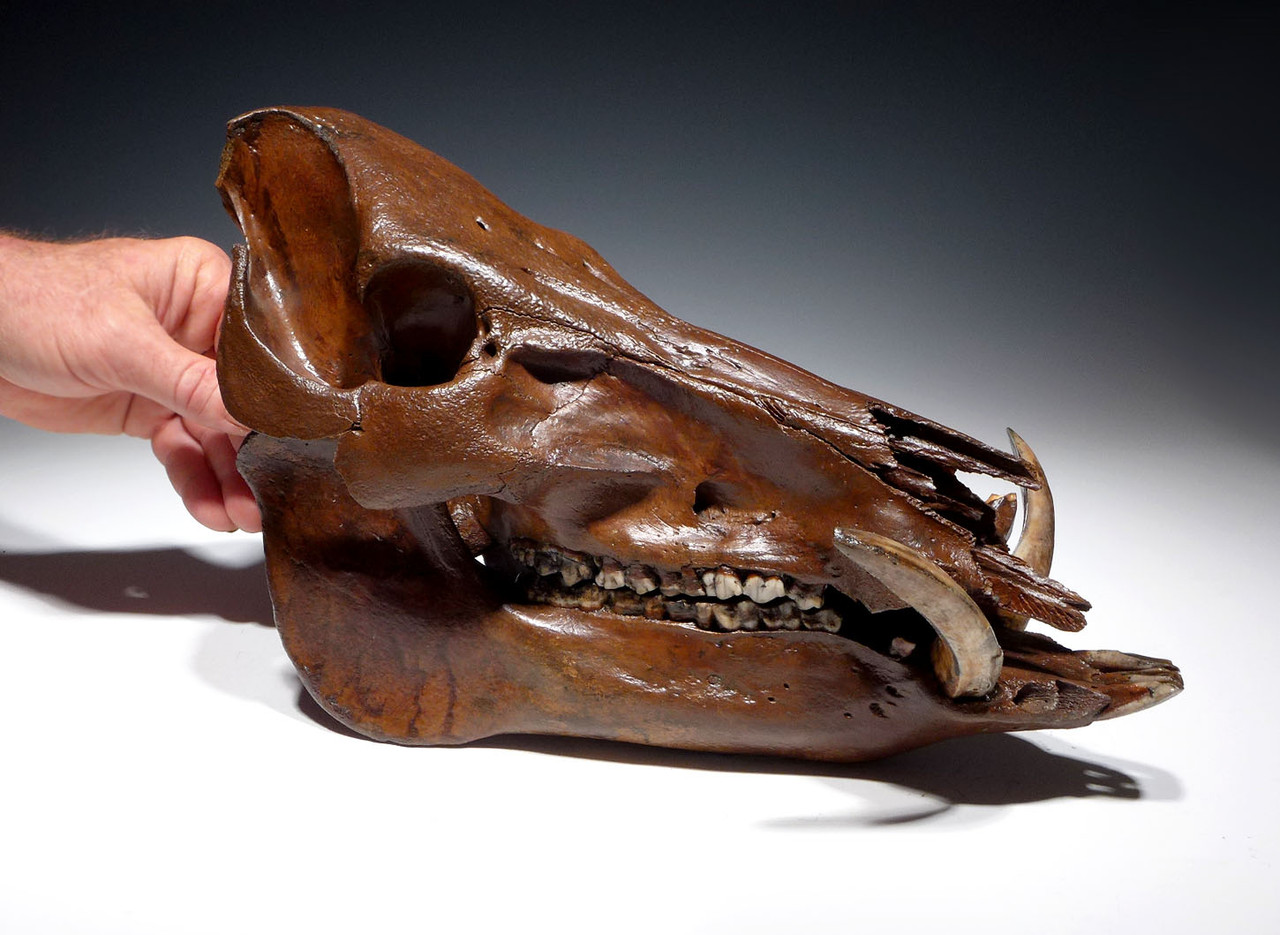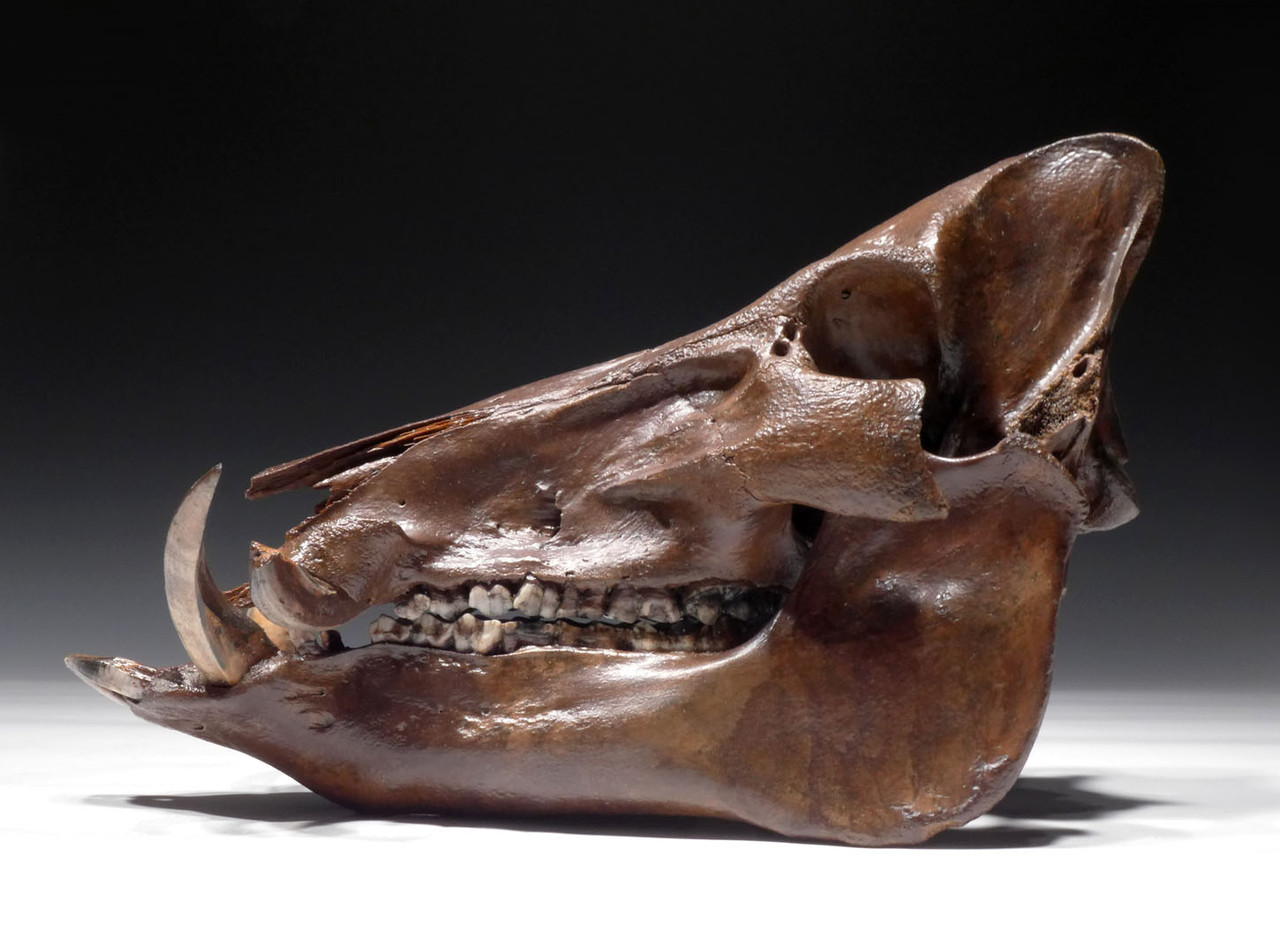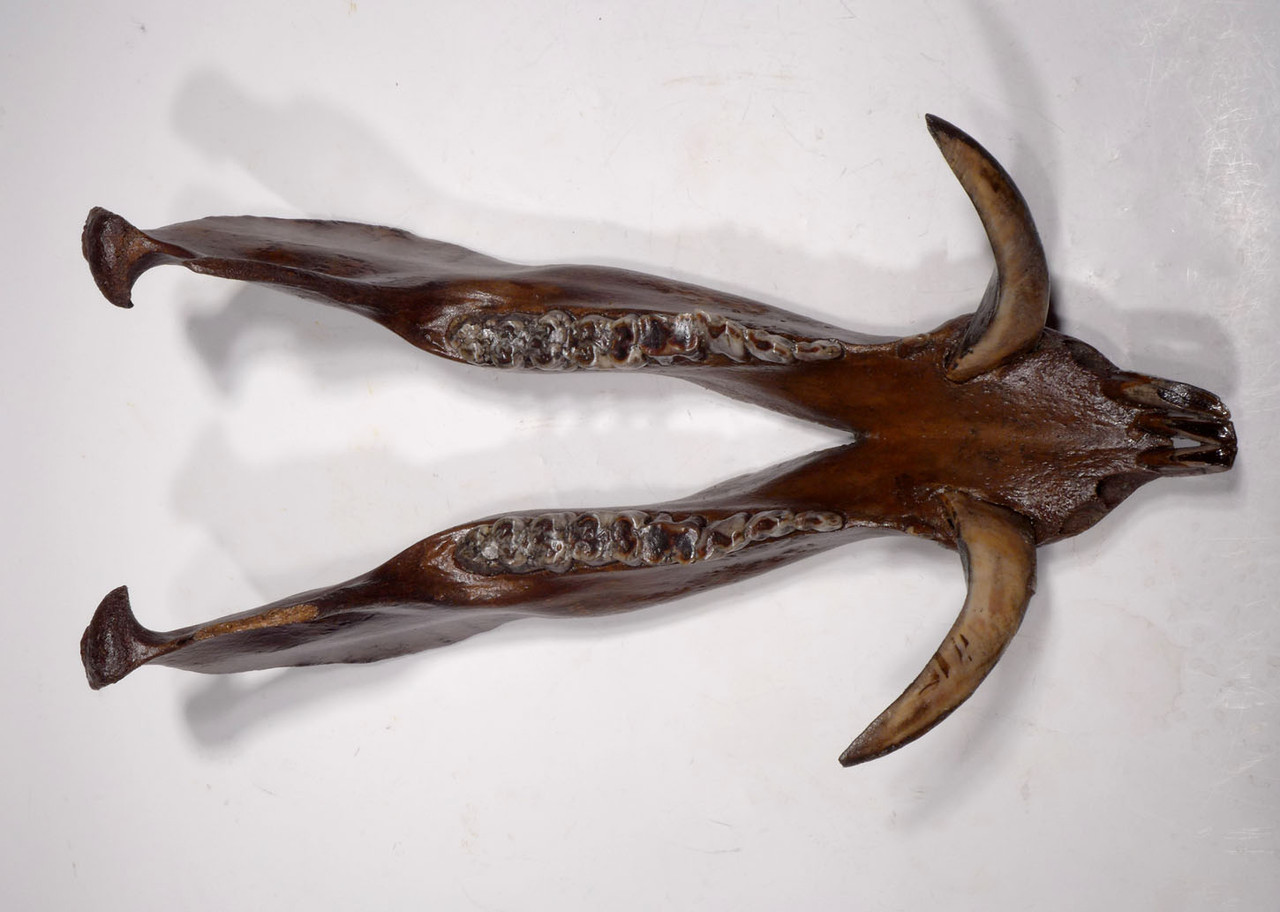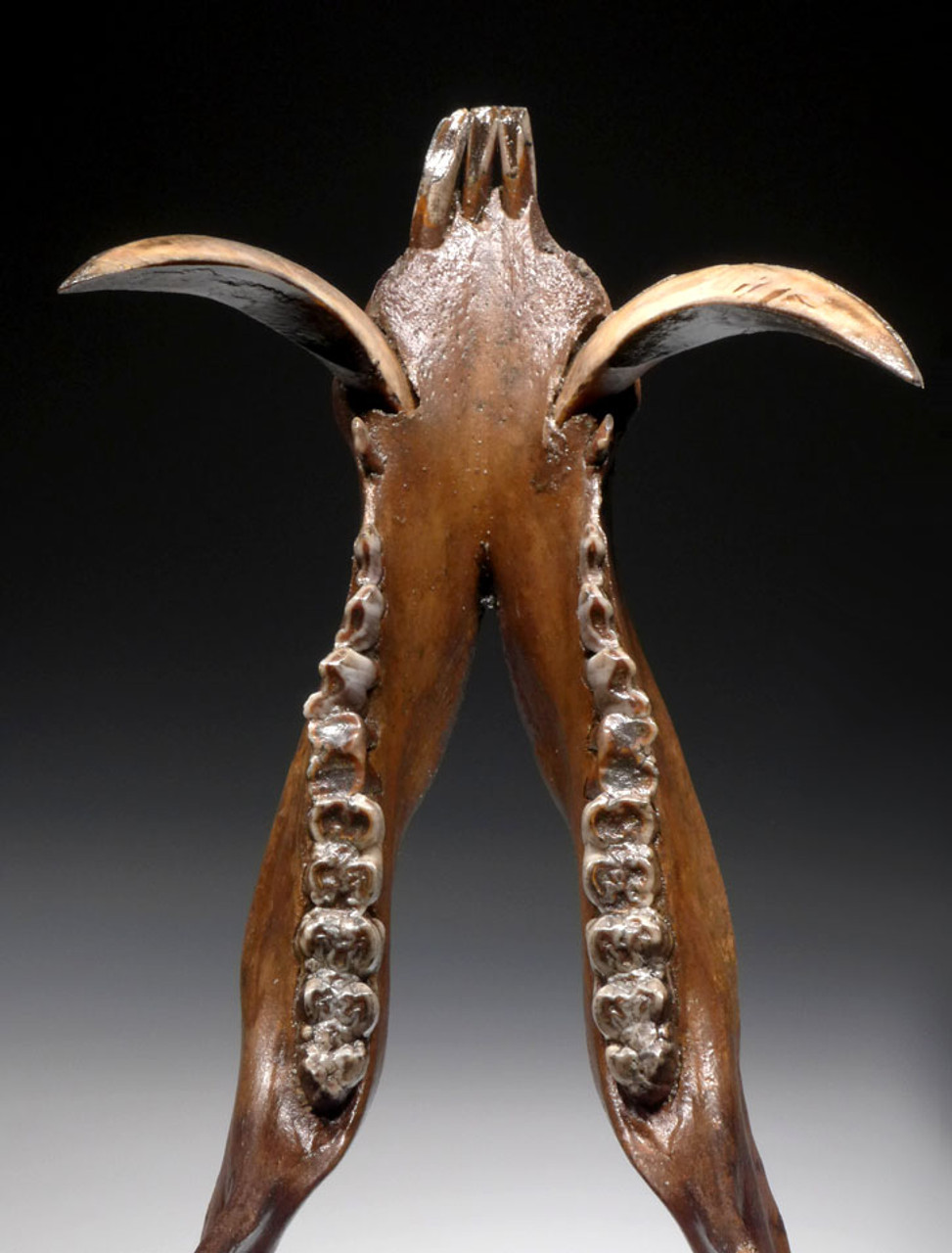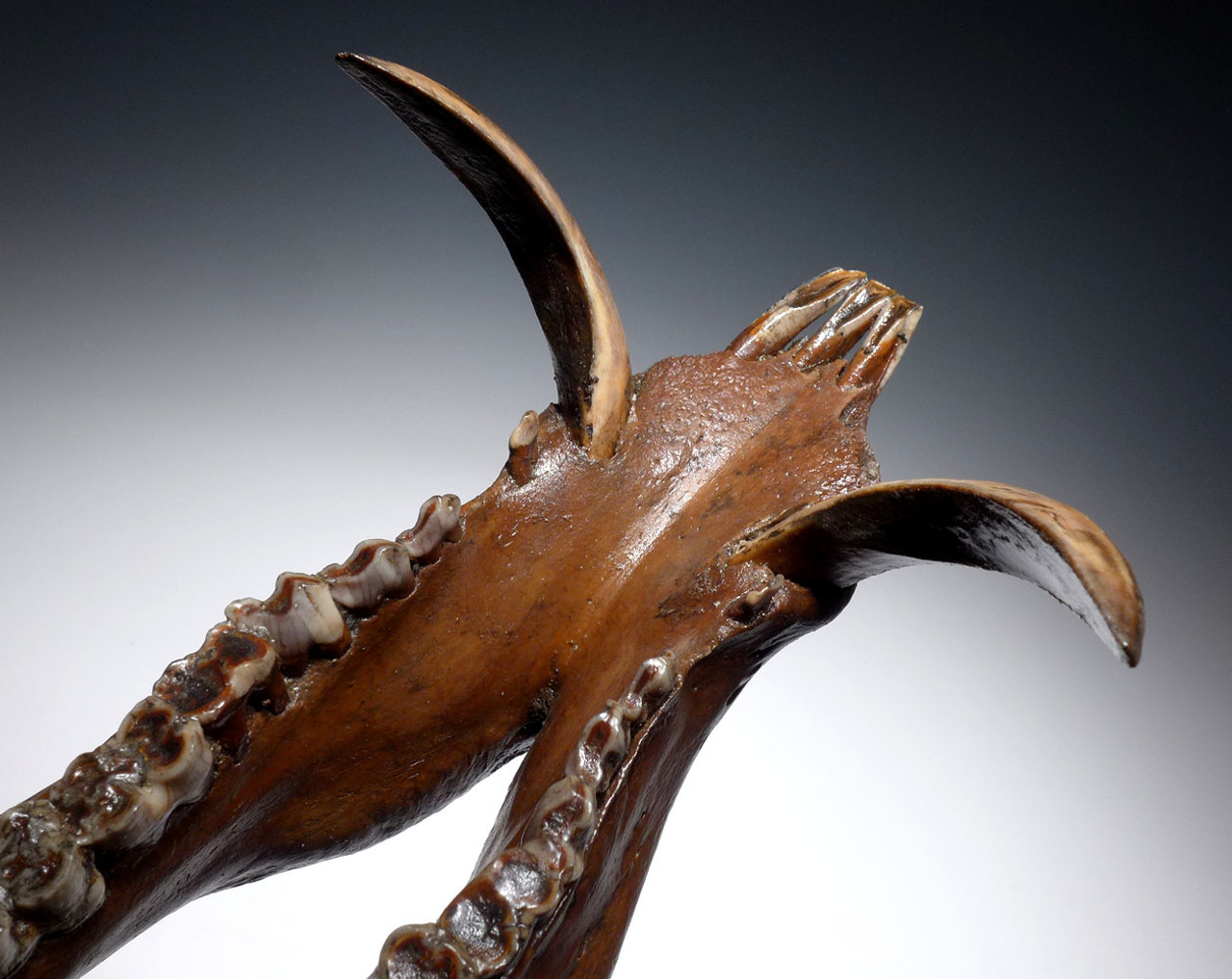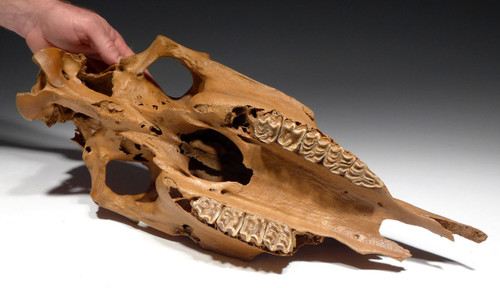Product Description
This is an extremely rare offering - a complete fossil skull with the ORIGINAL lower jaw and teeth, from a European Ice Age wild boar, Sus scrofa. In 33 years of our work with this material, we have never encountered a fossil Wild Boar skull of this level of complete preservation, in private hands. The German private collection it came from spanned nearly 40 years, comprising many of the rarest and complete European Ice Age fossils we have ever seen outside a museum and this skull was the ONLY boar skull with an original lower jaw and all original tusks and teeth. It was reportedly found by gravel dredge in south central Europe, from a layer that included other extinct megafauna such as Megaloceros, Woolly Rhino, Steppe Bison, as well as some Mesolithic antler tools in a layer just above its find spot layer.
The skull and lower jaw are in impeccable condition. The lower jaw has ALL molars and pre-molars, original tusks and three of the original six incisors. The front portion of the skull got damaged by the dredge and is missing but, one of the two original upper tusks is present, as are BOTH of the lower tusks. How the lower tusks avoided damage is a miracle as their sharp tips are even still intact.
THERE IS NO REPAIR, RESTORATION OR ADDING OF ANY TUSKS OR TEETH FROM ANOTHER SKULL - EVERYTHING YOU SEE IS 100% ORIGINAL TO THIS SKULL AND OF THE SAME ANIMAL.
Never again, will we have the opportunity to offer such a fossil wild boar skull of this level or completeness or preservation. This piece deserves a place in a museum or any public exhibition displaying all the important megafauna of Europe's final Ice Age and Stone Age as this was one of the primary hunted animals of Upper Paleolithic and Mesolithic humans.
CLICK HERE TO LEARN MORE ABOUT WILD BOARS
HISTORY
The wild boar, Sus scrofa, belongs to the Suidae Family and are artiodactyls or 'even-toed' ungulates. These mammals usually have either two or four weight-bearing toes with hooves. The "cloven hoof" appearance is characteristic of pigs, deer and cattle. Pigs evolved in the Oligocene Period, most likely in Asia and first appeared in Europe during the Miocene Period. They are omnivores and in prehistoric times, lived in a wide variety of habitats including tropical rainforests and dense woodlands.
The famous Altamira Cave in Spain features Upper Paleolithic cave art depicting wild boars amongst other prehistoric mega-fauna. These works have been dated from 18500 to 14000 years ago. The wild boar played an important part in Man's survival in the Mesolithic Period with numerous sites across Europe producing evidence of hunting and butchering of boar. From the Mesolithic Period into the Neolithic Period, human graves have yielded jewelry made out of boar tusks and incisors. Later, in the Neolithic Period, the boar was domesticated and to this day, the pig is a predominant source of meat all across Europe.
The wild boar is a large and extremely ferocious beast that still survives today. They have a saying in the Balkans that "you take a hunter with you when you want to kill a deer but you take a priest with you when you want to kill a boar". Wild boars are fearless creatures that have been known to attack and many times, kill humans. The most impressive and dangerous weapon of the wild boar is its dagger-sharp lower tusks. Only male boars develop long canines in their lower jaws. The dramatic, curved tusks as well as the robust upper canines are continually growing and rubbing against each other thereby keeping the ends sharp at all times. Often, a boar will attack any animal in its way, swinging its massive head against the body of its unfortunate victim, repeatedly puncturing its enemy's body with swift stabs from its sharp tusks.
 US DOLLAR
US DOLLAR
 EURO
EURO
 AUSTRALIAN DOLLAR
AUSTRALIAN DOLLAR
 CANADIAN DOLLAR
CANADIAN DOLLAR
 POUND STERLING
POUND STERLING


